Related Research Articles
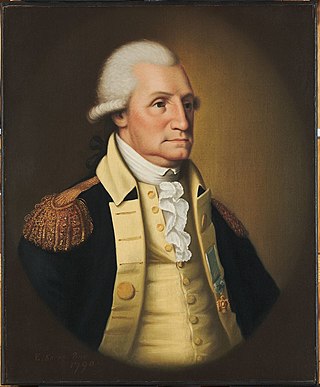
The Society of the Cincinnati is a fraternal, hereditary society founded in 1783 to commemorate the American Revolutionary War that saw the creation of the United States. Membership is largely restricted to descendants of military officers who served in the Continental Army.

Philip John Schuyler was an American general in the Revolutionary War and a United States Senator from New York. He is usually known as Philip Schuyler, while his son is usually known as Philip J. Schuyler.

The parish of Trinity Church has three separate burial grounds associated with it in the New York City borough of Manhattan. The first, Trinity Churchyard, is located in Lower Manhattan at 74 Trinity Place, near Wall Street and Broadway. Alexander Hamilton and his wife Elizabeth Schuyler Hamilton, Albert Gallatin, and Robert Fulton are buried in the downtown Trinity Churchyard.

Alexander McDougall was a Scottish-born American seaman, merchant, a Sons of Liberty leader from New York City before and during the American Revolution, and a military leader during the Revolutionary War. He served as a major general in the Continental Army, and as a delegate to the Continental Congress. After the war, he was the president of the first bank in the state of New York and served a term in the New York State Senate.

Richard Varick was an American lawyer, military officer, and politician who has been referred to as "The Forgotten Founding Father." A major figure in the development of post-Independence New York City and the state of New York, Varick became the 45th Mayor of New York City in 1789 and served eleven consecutive one-year terms until 1801.
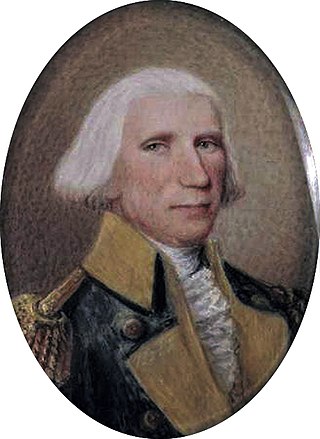
Elias Dayton was an American merchant and military officer who served as captain and colonel of the local militia and in 1783 rose to become a brigadier general during the American Revolutionary War. Afterward, he became the Mayor of Elizabethtown, New Jersey and served in the New Jersey General Assembly. He was the father of U.S. Constitution signer Jonathan Dayton.

James Nicholson was an officer in the Continental Navy during the American Revolutionary War.
Thomas Sim Lee was an American planter, patriot and politician who served as Maryland Governor for five one-year terms, as well as in the Congress of the Confederation (1783–84), Maryland Ratification Convention of 1788 and House of Delegates in 1787. He also held local offices and owned many town lots in Georgetown (which became part of the new federal city, Washington, District of Columbia, and spent his final decades operating "Needwood" plantation in Frederick County, Maryland. In addition to working closely with many of the Founding fathers, he played an important part in the birth of his state and the nation.
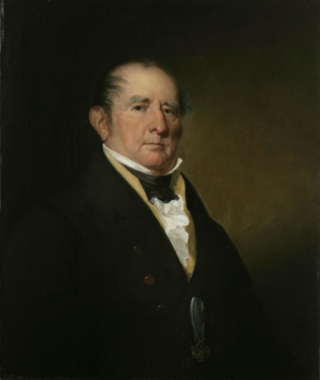
Aaron Ogden was an American soldier, lawyer, United States Senator and the fifth governor of New Jersey. Ogden is perhaps best known today as the complainant in Gibbons v. Ogden which destroyed the monopoly power of steamboats on the Hudson River in 1824.

John Hoskins Stone was an American planter, soldier, and politician from Charles County, Maryland. During the Revolutionary War he led the 1st Maryland Regiment of the Continental Army. After the war he served in the state legislature and was the seventh Governor from 1794 to 1797.
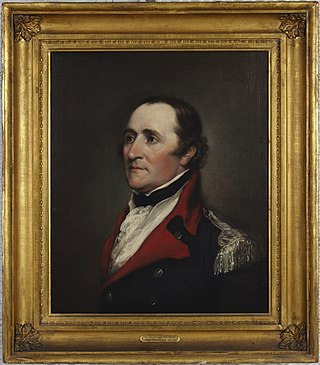
Ebenezer Huntington was an officer in the Continental Army during the American Revolutionary War, and afterwards United States Representative from Connecticut.
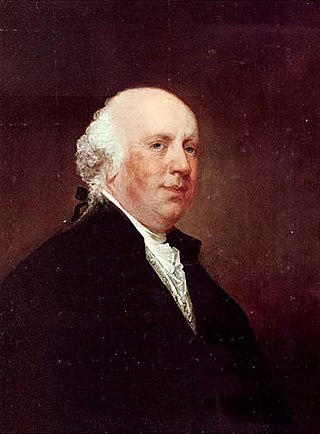
Henry Jackson was a Continental Army officer from Boston, Province of Massachusetts Bay, during the American Revolutionary War. For most of the war, he was colonel of Jackson's Additional Continental Regiment, which was redesignated the 16th Massachusetts in 1780. He commanded the last regiment of the Continental Army, the 1st American, which was disbanded in 1784. Jackson was a lifelong friend of Henry Knox, another Continental Army officer, whose business affairs he was also heavily involved in.
John Crane was a participant in the Boston Tea Party and a soldier during the American Revolutionary War.
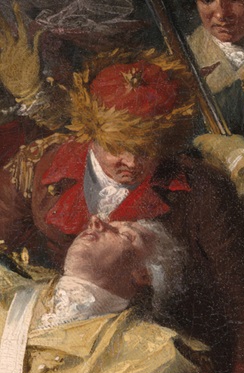
Matthias Ogden was an American soldier and politician. He fought in the American Revolutionary War, and served in various political positions afterwards.
Washington's aides-de-camp during the American Revolutionary War were officers of the Continental Army appointed to serve on General George Washington's headquarters staff, with the rank of lieutenant colonel. The headquarters staff also included one military secretary, a full colonel.
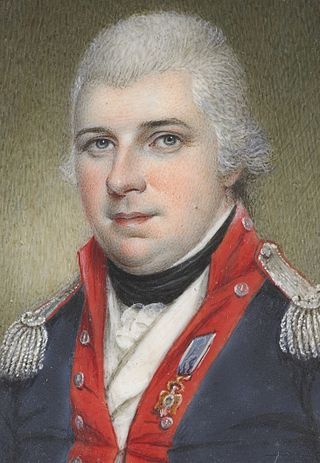
Thomas Humphrey Cushing was an officer in the Continental Army, and later the United States Army. A veteran of the American Revolutionary War and the War of 1812, he attained the rank of brigadier general. He later served as collector of customs for the Port of New London, Connecticut.

Abraham Ogden was an American lawyer and politician who served as U.S. Attorney for the District of New Jersey from 1791 to 1798 and negotiated the Treaty of New York (1796).

William Bayard Jr. was a prominent New York City banker and a member of the Society of the New York Hospital. He was a close friend to Alexander Hamilton, who was taken to his Greenwich Village home after his famous duel with Aaron Burr, where Hamilton later died.

Thomas Hunt (1754—1808) was an American military officer who served in the Continental Army during the American Revolutionary War and later served in the United States Army where he rose to the rank of colonel and served until his death.
References
- ↑ Massachusetts, Town Clerk, Vital and Town Records, 1626-2001
- ↑ United States Rosters of Revolutionary War Soldiers and Sailors, 1775-1783, Abijah Hammond, 03 May 1775 microfilm 101711086
- ↑ United States Revolutionary War Rolls, 1775-1783 National Archives and Records Services, 1980, microfilm 830,414
- ↑ Massachusetts, Revolutionary War, Index Cards to Muster Rolls, 1775-1783, Massachusetts State Archives, Boston; FHL microfilm 2,027,112
- ↑ Institution of the Society of the Cincinnati of the New York State Society by John Schuyler, page 227, New York State Society of the Cincinnati, New York 1886
- ↑ Letter from George Washington to Abijah Hammond, 24 August 1781 Headquarters Kings Ferry 24th August 1781
- 1 2 3 4 5 6 Sypher, Francis J. Jr. (2004). New York State Society of the Cincinnati: Biographies of Original Members and Other Continental Officers. Fishkill, New York: New York State Society of the Cincinnati. pp. 203–204. OCLC 55959092.
- ↑ THOMAS'S MASSACHUSETTS SPY, EXTRA, July 25, 1804 from the New York Evening Post
- ↑ THE OLD MERCHANTS OF NEW YORK CITY Second Series By Walter Barrett, Clerk 1863 Chapter 33
- ↑ "Town of Hammond, Lawrence County, New York - Official Website of the Town of Hammond". Archived from the original on 2023-05-15.
- ↑ The Crooked Lake Review 1791/1792 from Eagles Byte by David Minor https://www.crookedlakereview.com/articles/101_135/109fall1998/109minor.html
- ↑ Digital Historic Collections of the New York Society Library https://cityreaders.nysoclib.org/Detail/entities/461
- 1 2 New York Freemasons in the Revolutionary War (PDF). 1900. pp. 80–83. LCCN 06007447.
- ↑ The New Yorkers: 31 Remarkable People, 400 Years, and the Untold Biography of the World's Greatest City By Sam Roberts of the New York Times, 2022 Chapter 7
- ↑ New York Manumission Society https://founders.archives.gov/?q=Abijah%20Hammond&s=1111311111&sa=&r=4&sr=
- ↑ United States Census 1790/1800/1810/1820/1830 East Ward, City and County of New York
- ↑ The Journal of Negro History, Harry B. Yoshpe, PhD University of the State of New York, Albany, Vol. 26, No. 1 (Jan., 1941), pp. 78-107 (30 pages), Page 84
- 1 2 Wheeler, William Ogden (1907). The Ogden family in America, Elizabethtown branch, and their English ancestry John Ogden, the Pilgrim, and his descendants, 1640-1906. p. 188. OCLC 609180936.
- ↑ Massachusetts State Vital Records, 1841-1920
- ↑ New York Marriages, 1686-1980", database, FamilySearch (https://familysearch.org/ark:/61903/1:1:VK1K-J2M : 21 January 2020), Abijah Hammond, 1816